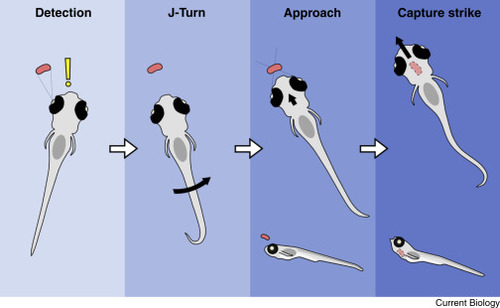- Title
-
Naturalistic Behavior: The Zebrafish Larva Strikes Back
- Authors
- Privat, M., Sumbre, G.
- Source
- Full text @ Curr. Biol.
|
Prey-capture sequence. Prey-capture sequence ending in a successful capture strike. Bottom: lateral view. Note the position of the paramecia (red shape) in the anterior dorsal visual field before the capture strike is released, as well as the protrusion of the jaw and the elevation of the cranium during the capture strike. Black arrows: change in position of the larva after the movement is completed. |
|
Putative neural circuits underlying behavior. Brain regions involved in prey capture and exploratory behavior: PSm, magnocellular superficial pretectal nucleus; AF7, arborization field 7; RGC, retinal ganglion cells; nMLF, nucleus of the medial longitudinal fascicle; OT, optic tectum; NI, nucleus isthmi; ARTR, anterior rhombencephalic turning region; cH, caudal hypothalamus; LH, lateral hypothalamus. The arrows indicate the interactions between the different brain regions. |


